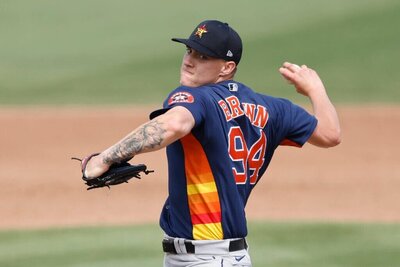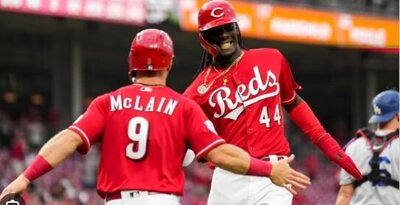1) Bryce Harper - Harper continues to be the straw that stirs the drink for the Nationals. He had another big game Friday night against the Red Sox, going 3 for 5 with a home run, three RBI and two runs scored. Since joining the Nationals on April 28th he has been the team's best hitter, batting .288 with six home runs, 17 RBI and 25 runs scored, plus he leads the team in most of the offensive categories. Checking some of his advanced metrics, I found that his O-Swing (37.1 percent), which represents swings outside the zone, is one area he could improve on to raise his Contact rate, which is currently 78 percent. Harper's F-Strike is high at 64.7 percent, and that works against him because it means he's often hitting from behind in the count. Improvement in these metrics will help him hit closer to .300 and make him even more of a Fantasy stud than he already is.
2) Matt Cain - Matt Cain improved to 7-2 on the season Thursday night, overcoming four fielding errors that led the three unearned runs in the third inning. Cain struck out nine and walked just one over seven innings of work, but he needed 116 pitches to get the job done. Cain has lost a couple of miles per hour off his fastball over the past two years, but he's relying on the pitch less often than in the past. He is currently bringing heat on just 51.5 percent of his pitches, instead relying more on his slider and changeup to get hitters out. This season, he's raised his strikeout rate to a career high 8.58 K/9 while reducing his walk rate to a career low 1.67 BB/9. He's getting more swinging strikes than ever before (11 percent Sw Strk) and his highest percentage of first pitch strikes (62.6 F-Strike). Last season he posted a career best 2.88 ERA, but with the improvements to his K rate and better control, he has a shot at improving on that performance this year.
3) Brad Lidge - The Nationals called on Brad Lidge to pitch the ninth inning with a four- run lead in Friday night's game against the Red Sox. Lidge turned it into a save chance for Tyler Clippard after allowing a walk and a run scoring double, and only retiring one batter. This leaves the Nationals closer situation just as unclear as it was prior to Lidge's return. Clippard has gotten the last six saves since Henry Rodriguez lost the job, but the team would like Lidge to regain the role, at least until Drew Storen returns sometime in July. Lidge wasn't exactly lights out during his rehab assignment in High A ball and he wasn't effective in his first audition since returning from the DL. He still has not regained any of his lost velocity on his fastball, instead relying on his slider nearly 60 percent of the time to get hitters out.
4) Mark Buehrle - The long ball hurt Buerhle for the second game in a row and the eighth time in 12 starts this season. He's now given up nine home runs in 80 IP. Aside from homers, everything else in Buehrle's advanced stat profile looks like every other season in his 13 year career. His Groundball rate (44.6 percent) is actually slightly better than his career average rate and his Swinging Strike rate (6.5 percent) has been flat for five straight seasons. The main problem with Lidge as far as Fantasy use goes, remains his strikeout rate (4.39 K/9), which is just too low to justify using him in mixed leagues that count strikeouts (which is nearly all of them). Still, he's won 13 games in each of the last three seasons and pitched 200 or more innings in all but his first year in MLB. Regardless of that, we're recommending that you sell now, as he has actually over-performed thus far and is bound to regress going forward.
5) Austin Kearns - Kearns played left field and shifted to first base later in Friday night's game against the Rays. He went 0 for 4 with two strikeouts and left two men on base in his first game back off the DL. Kearns is batting .346 with three HRs and nine RBI in limited play for the Marlins this season. His average is propped up by a .441 BABIP, which is bound to regress given enough playing time. He's always had good power and the ability to hit for average but he's never been able to put the two together for a whole season. Not even in 2006 and 2007, the only seasons in which he's played more than 120 games. Now age 32, I wouldn't expect Kearns to suddenly become a complete player. The only reason he's getting playing time now is because the Marlins outfielders have had difficulty staying healthy. He might have some value in deep NL-only leagues, though, but watch out for the regression in his batting average.
There are over 100 player news blurbs posted in the member area each morning. Members can read the rest of today's player news by clicking here. Not a member? Join today.


































